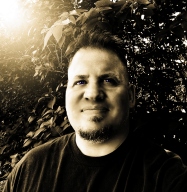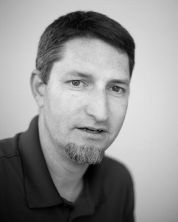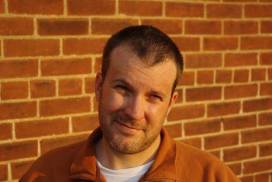First and foremost, I want to thank author J.P. Wilder for inviting me to join this blog tour. Following my responses are the next authors who are participating in the tour, so be sure to check out their sites.
1. What am I working on?
I recently submitted a short story for a heroic fantasy anthology to be released in early 2015.
I am spending this summer working on a novella based on the Native American legend of the Wendigo, a deadly creature said to lurk within the woods of Wisconsin, Minnesota and Canada. This will be an Urban Fantasy piece (although the majority takes place in the woods of northern Wisconsin rather than a city).
I am also doing research for the third book in the Nephilim Chronicles, which will take place during the reign of the Emperor Constantine. This book will have gladiators, pagan rituals, demons, nephilim and a great deal of action.
2. How does my work differ from others of its genre?
The use of supernatural elements in conjunction with both modern and historical settings sets my writing apart. Additionally, in my series, some of the nephilim make a choice to fight with the angels of Heaven, while others serve the demons of Hell. This is a departure from the way that other books of this type deal with the nephilim.
My series delves into several different genres. While all three books share a supernatural/religious element, the first book: Yare’ Darkness Bound, is primarily considered Supernatural Fiction or Urban Fantasy. The second book: Iron Song, is both Heroic Fantasy and Historical Fantasy. The third book will also fit into the Historical Fantasy genre.
3. Why do I write what I do?
Although I have crafted many short stories throughout my life, when I decided to write my first book, I originally intended on writing Historic Fiction (Bernard Cornwell and Michael Curtis Ford being a couple of my favorite authors). In fact, I already had a number of story ideas jotted down dealing with the Romans and the Celts. But one day, as I parked my car outside of a restaurant, I looked up and saw a growth on the trunk of a tree that looked like a dragon. At that moment the story for Yare’ Darkness Bound started to reveal itself to me. I let the idea grow, and it guided me to a world of Urban Fantasy. I just went with it, and then weaved in some history to satisfy my inner historian.
After putting together the outline for the first book, the concept felt good, so I chose to expand into a multi-book series. I did not want to have characters who repeated in every book, so instead I decided to maintain a theme that carries through the series. I called it the Nephilim Chronicles because the Nephilim are the primary element that carries through all the books.
I opted to have each successive book move further back in time, as that gave me the opportunity to use my knowledge of history and my research skills to craft the stories. Iron Song takes place in 885 AD in Europe, and I really had a great time pouring over maps and accounts of the battles that took place in Frankia at that time.
Iron Song was my favorite to write because I drew upon my own Norse heritage (although I used the Danes rather than the Norwegians) to create a Viking Era tale. In addition, Iron Song allowed me to write the quintessential Hero vs Dragon story that I grew up reading. I tried to incorporate the feel of the epic Beowulf (which is one of my all time favorite books) into the story.
So, to finally answer the original question that was posed, I truly love writing about warriors and battles, especially when those battles are between forces of light and darkness. The conflict between the supernatural beings in my books represents the many struggles everyone faces as they move through their lives. Developing supernatural characters that are able to fight and move in ways that defy logic and physics makes for more exciting battles and adds an extra level of danger for all involved. Plus it is just plain fun to write this stuff!
4. How does my writing process work?
Whenever an idea for a story presents itself to me, I write it down in my notebook. It may be as simple as a couple of words, or could end up being an entire synopsis. Some of those ideas will become actual stories (or parts of stories) and others will remain dormant until they are needed.
Once I have a good story idea, I write a loose outline that takes me through the story from beginning to end. I stress “loose” because it is a basic framework to keep me moving along. I frequently add and delete ideas, and may travel far from the outline before coming back again. The main reason for my outline is to identify when major events occur so that I can reference it throughout the project and maintain a level of continuity in the story.
I also spend a good deal of time brainstorming character names and researching the environments in which my story takes place. Iron Song is set during the Viking Age in Europe, so I devoted time to researching the geography of the land, historical figures of the time, town names, the animals that live in the region, types of weapons and tactics that were used, etc. While the story is fantasy, it is historical fantasy, so I wanted to ensure there was accuracy in both the setting and characters.
I maintain a notebook that has a list of all of my characters names and their bios, so that I can use it as I develop the story. Some of the characters may not make it into the story at all, but are waiting there anyway, just in case.
Once I have a solid grasp on the storyline, I begin writing. I like to start at the beginning and work straight through towards the end, but that isn’t always possible. If I get stuck somewhere, I may leave that for a bit and work ahead or conduct more research. Or if my muse drags me towards another part of the book, I may write a scene and then mark it for insertion later in the story.
After the endless hours of creativity have resulted in a finished draft, I walk away for a day or two (and sit back with a mug of dark beer to celebrate my accomplishment). Then I come back and read over the story, editing as I go for spelling and grammar. Once complete, I go through the story again, looking at the structure and details of the story, and making changes to ensure a smoother flow.
Once changes have been made, I read over the whole story again, making any other tweaks that seem necessary, before calling it a final draft and preparing for going to print.
Then comes marketing, which is an entirely different animal altogether.
Below you will find the next authors who have joined in this blog tour. Head on over and check out their work!
R.A. McCandless has been a writer both professionally and creatively for nearly two decades. He was born under a wandering star that led to a degree in Communication and English with a focus on creative writing. He is the author of the urban fantasy “Tears of Heaven”, short stories “Through the Sting of Fairy Smoke” in the “Nine Heroes” anthology, and “He Who Tells the Tale” and the historic fiction novel “The Second Cut” (due 2014). He continues to research and write historical and genre fiction, battle sprinklers, and play with his three boys.
http://robroymccandless.wix.com/ramccandless
Walter Rhein is the author of Beyond Birkie Fever, The Bone Sword, The Reader of Acheron, and the short story “The Act of Sleepless Nights” which is part of Nine Heroes: Tales of Heroic Fantasy. He was born in Wisconsin, but moved to Lima, Peru in his twenties. There, he supported himself by writing, teaching, translating and editing. He currently splits his time between Wisconsin and Peru.
http://www.heroicfantasywriters.com


